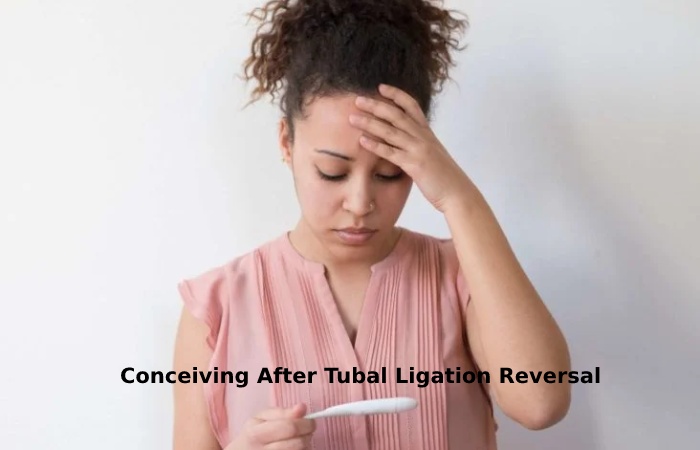Tubal Ligation Reversal – Tubal ligation is a preventive measure against pregnancy until you feel ready to conceive. The fertility specialist cuts, ties, or blocks the fallopian tubes during a tubal ligation.
This surgical procedure prevents the eggs from traveling down to the uterus and prevents sperm from going up the tubes. And it won’t alter your natural cycle.
On the other hand, a tubal ligation reversal procedure allows you to revert to the normal reproductive cycle that allows you to conceive and grow the embryo in the womb.
During this procedure, your specialist doctor cuts off the obstructed area of the tubes and reattaches the two parts to allow eggs to descend and fertilize with the incoming sperm.
Table of Contents
Who Needs Tubal Ligation Reversal?
About one million women undergo tubal ligation each year, with 1% seeking a reversal. Of these numbers, up to 20% of those who received the procedure in their 20s and those in new relationships end up regretting it. This is where reversal comes in to benefit patients.
A tubal ligation reversal helps restore your ability to conceive naturally. The ideal candidate has normal ovulation and menstruation cycles without other fertility issues.
Conceiving After Tubal Ligation Reversal

While tubal ligation is a permanent sterilization method of preventing pregnancy, your fertility doctor can help to reverse it or induce pregnancy in two ways:
Tubal Reversal
The doctor restores patency to your fallopian tubes through a surgical procedure, allowing you to conceive naturally.
The ideal couple should not have other fertility issues as follows:
- They should have normal ovulation and menstrual cycle.
- The man should display a normal sperm analysis
- The woman should be at low risk of pelvic adhesions such as pelvic surgery, C-sections, or appendectomy.
- The woman should have at least 6 cm of fallopian tube remaining.
In-Vitro Fertilization
During IVF, your fertility doctor collects mature eggs from the ovaries, fertilizes them in a petri dish, and finally transfers the embryo into the walls of the uterus. A full IVF cycle takes at least three weeks.
Performing IVF is an alternative to tubal reversal, as the fertilized embryo is placed directly into the womb, where it implants and starts to grow. And the doctor can still retrieve the eggs from the ovaries without performing a tubal ligation reversal.
The Tubal Reversal Procedure
Before
The intended parent gets a complete physical exam to ensure no other health concerns exist. The doctor also performs tests to check the length and function of the tubes.
During
This surgical procedure takes 1.5 to 3 hours. During surgery, the surgeon cuts either side of the blocked fallopian tube. And using a microscope for precision carefully stitches them together. This procedure allows the eggs to move freely from the ovaries to the uterus.
After
After a successful tubal reversal, you can start trying to conceive. It can take some time after the reversal to see results.
When Is Tubal Ligation Reversal Not Possible?
Fallopian tubes are usually 8 inches long, and women with at least 4 inches left after tubal ligation reversal achieve the highest possibility of pregnancy. In addition, the surgical procedure for rejoining the two parts requires they have similar diameters.
If there’s too little tube that cannot be medically cut and rejoined, or if it’s damaged, reversal becomes near impossible.
Remember,
Apart from age, these factors can also impact your chances of getting pregnant after a tubal reversal.
- Type of previous tubal ligation
- The length of your fallopian tubes
- Presence of any scar tissue
- Your surgeon’s skills
Tubal Ligation Reversal FAQ
Q: Is there any pain or discomfort after a tubal reversal?
A: You might experience discomfort around the incision area. But your doctor will prescribe painkillers for your comfort during recovery.
Q: When can I resume normal activities after tubal reversal?
A: You can often resume your normal activities after two weeks to allow complete healing.
Q: Will I need to stay in the hospital after a tubal reversal procedure?
A: Some women may need observation after surgery, spending one to three days in the medical facility.
Q: How long does it take to get pregnant after a reversal?
A: Pregnancy is possible within the first month of the tubal reversal (however, this is uncommon), and for most, it happens within the first year after treatment.
Q: How much is a tubal reversal surgery?
A: The average cost for a tubal ligation reversal is $8,685, but it depends on where you reside and any initial medical tests necessary before the procedure.
Q: Does insurance cover the costs for a tubal reversal?
A: Insurance doesn’t usually cover this surgical procedure.

